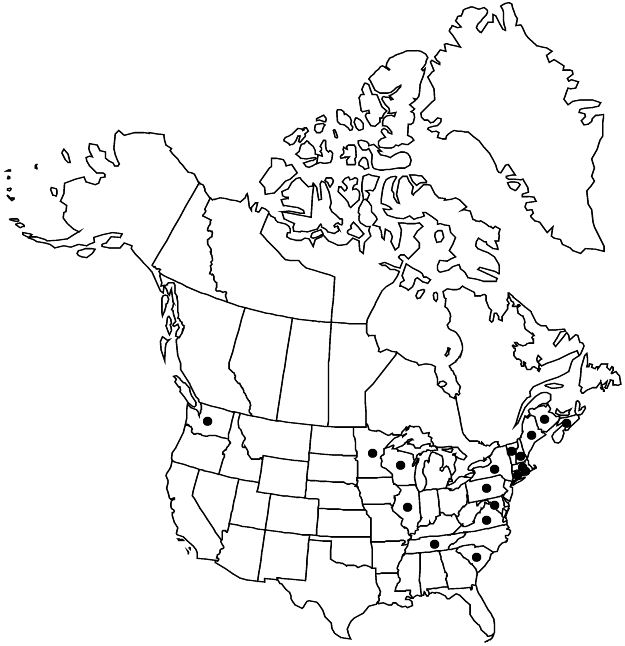Malus prunifolia
Theor. Prakt. Handb. Forstbot. 2: 1278. 1803.
Trees, 30–80(–100) dm. Stems 5–20 cm diam.; bark purplish brown or gray-brown, peeling irregularly; young branches purplish brown and densely puberulous, becoming grayish purple or grayish brown and glabrous at maturity; flowering shoots producing spurs, (5–)10–20(–35) mm. Buds purplish brown, ovoid, 5–7 mm, scale margins sparsely pubescent. Leaves convolute in bud; isomorphic; stipules deciduous, lanceolate, 4–5 mm, apex acuminate; petiole 10–50 mm, tomentose; blade elliptic or ovate, (3.5–)5–9.5(–11) × (2–)4–5(–8) cm, base broadly cuneate, margins unlobed, acutely serrate or serrulate, sometimes doubly serrate, apex acuminate or acute, sometimes cuspidate, abaxial surface glabrous, adaxial puberulent or subglabrous. Panicles umbel-like; peduncles 0–2 mm; bracteoles deciduous, rare, ± middle of pedicel, filiform, 3–4 mm. Pedicels 20–35 mm, puberulous. Flowers (30–)40–50 mm diam.; hypanthium puberulent; sepals triangular-lanceolate or lanceolate, 7–9 mm, longer than tube, apex acuminate, surfaces puberulent; petals white, obovate or elliptic, 25–30 mm, claws 1–2 mm, margins entire, apex rounded; stamens ca. 20, 8–10 mm, anthers yellow before dehiscence; styles 4 or 5, basally connate 1/3 length, 9–11 mm, longer than stamens, proximally tomentose. Pomes yellow to dark red, ovoid or oblong, 20–25(–34) mm diam., cores enclosed at apex; sepals persistent, reflexed (erect), raised, swollen at base; sclereids sparse surrounding core. Seeds dark brown. 2n = 34, 51.
Phenology: Flowering Apr–Jun; fruiting Aug–Oct.
Habitat: Hillsides, flats
Elevation: 0–1300 m
Distribution

Introduced; N.B., N.S., Conn., D.C., Ill., Maine, Mass., Minn., N.H., N.Y., Pa., R.I., S.C., Tenn., Vt., Va., Wash., Wis., ne Asia.
Discussion
Malus prunifolia is closely related to the cultivated apple, M. domestica, and sometimes is used as rootstock for the latter because of its extensive root system. Malus prunifolia differs from M. domestica in having more sharply serrate leaves, glabrate or glabrous abaxial surfaces of mature leaves, relatively long pedicels, and pomes with raised, swollen, fleshy-based sepals.
Malus prunifolia is cultivated worldwide and utilized as grafting rootstock, as a fruit tree, and as an ornamental. The species is potentially a genetic source of cold tolerance and disease resistance for apple-breeding programs. See discussion under 4. M. fusca for distinguishing M. prunifolia from the hybrid M. ×dawsoniana.
Malus ×scheideckeri Späth ex Zabel is considered a hybrid of M. floribunda and M. prunifolia (see discussion of the latter under 8. M. halliana). The 'Scheidecker crabapple' is cultivated as an ornamental tree for its semidouble pale pink flowers and yellow to orange globose pomes.
Selected References
None.